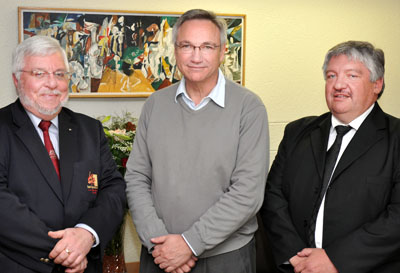UFS academics work on text book about legal requirements for cultural institutions
 |
| Prof. Johan Henning, Dean of the Faculty of Law, UFS; Prof. Loot Pretorius, also from the Faculty of Law; and Mr Tokkie Pretorius, Director of the War Museum in Bloemfontein. |
A team consisting of Prof. Johan Henning, Dean of the Faculty of Law at the University of the Free State (UFS), Prof. Loot Pretorius, also from the Faculty of Law, and Mr Tokkie Pretorius, Director of the War Museum, is going to tackle a project which will focus on the new legal requirements for cultural institutions, with special reference to national museums.
Previously this team has written a textbook on the legal position of development corporations, which is regarded as a standard work about this topic.
Museum managers often come from the expert conservation and research environment and find it difficult to comply with the new legal requirements pertaining to national museums.
National museums, amongst which counts the War Museum of the Boer Republics, are classified by the Public Finance Management Act (PFMA) no. 1 of 1999 as Public Entities.
This Act also states specific accounting requirements regarding the accounting standards, year-end statements and the auditing process on the one hand, but on the other hand specific requirement with regard to corporate management.
The King II Report and it most recent extension, King III, sets specific guidelines to be followed in the managerial process and specifically emphasises the role and responsibilities of non-executive boards of directors (board members) and those of the executive director (chief executive officer). The Cultural Institutions Act, no. 119 of 1998, regulates the operation of national museums, amongst others the constitution and functions of the boards of national museums. Various other forms of legislation also apply to national museums.
According to Prof. Pretorius they aim to publish the book within the next 18 months.